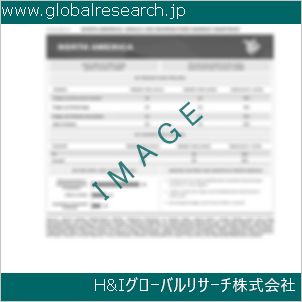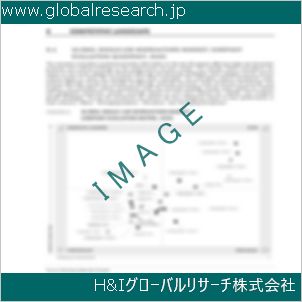Table of Contents
1 Industry Overview of Zirconium
1.1 Definition and Specifications of Zirconium
1.1.1 Definition of Zirconium
1.1.2 Specifications of Zirconium
1.2 Classification of Zirconium
1.3 Applications of Zirconium
1.3.1 Nuclear Application
1.3.2 Non-Nuclear Application
1.4 Industry Chain Structure of Zirconium
1.5 Industry Overview and Major Regions Status of Zirconium
1.5.1 Industry Overview of Zirconium
1.5.2 Global Major Regions Status of Zirconium
1.6 Industry Policy Analysis of Zirconium
1.7 Industry News Analysis of Zirconium
2 Manufacturing Cost Structure Analysis of Zirconium
2.1 Raw Material Suppliers and Price Analysis of Zirconium
2.2 Equipment Suppliers and Price Analysis of Zirconium
2.3 Labor Cost Analysis of Zirconium
2.4 Other Costs Analysis of Zirconium
2.5 Manufacturing Cost Structure Analysis of Zirconium
2.6 Manufacturing Process Analysis of Zirconium
3 Technical Data and Manufacturing Plants Analysis of Zirconium
3.1 Capacity and Commercial Production Date of Global Zirconium Major Manufacturers in 2023
3.2 Manufacturing Plants Distribution of Global Zirconium Major Manufacturers in 2023
3.3 R&D Status and Technology Source of Global Zirconium Major Manufacturers in 2023
3.4 Raw Materials Sources Analysis of Global Zirconium Major Manufacturers in 2023
4 Capacity, Production and Revenue Analysis of Zirconium by Regions, Types and Manufacturers
4.1 Global Capacity, Production and Revenue of Zirconium by Regions 2019-2024
4.2 Global and Major Regions Capacity, Production, Revenue and Growth Rate of Zirconium 2019-2024
4.3 Global Capacity, Production and Revenue of Zirconium by Types 2019-2024
4.4 Global Capacity, Production and Revenue of Zirconium by Manufacturers 2019-2024
5 Price, Cost, Gross and Gross Margin Analysis of Zirconium by Regions, Types and Manufacturers
5.1 Price, Cost, Gross and Gross Margin Analysis of Zirconium by Regions 2019-2024
5.2 Price, Cost, Gross and Gross Margin Analysis of Zirconium by Types 2019-2024
5.3 Price, Cost, Gross and Gross Margin Analysis of Zirconium by Manufacturers 2019-2024
6 Consumption Volume, Consumption Value and Sale Price Analysis of Zirconium by Regions, Types and Applications
6.1 Global Consumption Volume and Consumption Value of Zirconium by Regions 2019-2024
6.2 Global and Major Regions Consumption Volume, Consumption Value and Growth Rate of Zirconium 2019-2024
6.3 Global Consumption Volume and Consumption Value of Zirconium by Types 2019-2024
6.4 Global Consumption Volume and Consumption Value of Zirconium by Applications 2019-2024
6.5 Sale Price of Zirconium by Regions 2019-2024
6.6 Sale Price of Zirconium by Types 2019-2024
6.7 Sale Price of Zirconium by Applications 2019-2024
6.8 Market Share Analysis of Zirconium by Different Sale Price Levels
7 Supply, Import, Export and Consumption Analysis of Zirconium
7.1 Supply, Consumption and Gap of Zirconium 2019-2024
7.2 Global Capacity, Production, Price, Cost, Revenue, Supply, Import, Export and Consumption of Zirconium 2019-2024
7.3 USA Capacity, Production, Price, Cost, Revenue, Supply, Import, Export and Consumption of Zirconium 2019-2024
7.4 EU Capacity, Production, Price, Cost, Revenue, Supply, Import, Export and Consumption of Zirconium 2019-2024
7.5 China Capacity, Production, Price, Cost, Revenue, Supply, Import, Export and Consumption of Zirconium 2019-2024
7.6 Japan Capacity, Production, Price, Cost, Revenue, Supply, Import, Export and Consumption of Zirconium 2019-2024
8 Major Manufacturers Analysis of Zirconium
8.1 Manufacturer One
8.1.1 Company Profile
8.1.2 Product Picture and Specifications
8.1.2.1 Type I
8.1.2.2 Type II
8.1.2.3 Type III
8.1.3 Capacity, Production, Price, Cost, Gross and Revenue
8.1.4 Contact Information
8.2 Manufacturer Two
8.2.1 Company Profile
8.2.2 Product Picture and Specifications
8.2.2.1 Type I
8.2.2.2 Type II
8.2.2.3 Type III
8.2.3 Capacity, Production, Price, Cost, Gross and Revenue
8.2.4 Contact Information
8.3 Manufacturer Three
8.3.1 Company Profile
8.3.2 Product Picture and Specifications
8.3.2.1 Type I
8.3.2.2 Type II
8.3.2.3 Type III
8.3.3 Capacity, Production, Price, Cost, Gross and Revenue
8.3.4 Contact Information
8.4 Manufacturer Four
8.4.1 Company Profile
8.4.2 Product Picture and Specifications
8.4.2.1 Type I
8.4.2.2 Type II
8.4.2.3 Type III
8.4.3 Capacity, Production, Price, Cost, Gross and Revenue
8.4.4 Contact Information
8.5 Manufacturer Five
8.5.1 Company Profile
8.5.2 Product Picture and Specifications
8.5.2.1 Type I
8.5.2.2 Type II
8.5.2.3 Type III
8.5.3 Capacity, Production, Price, Cost, Gross and Revenue
8.5.4 Contact Information
…
9 Marketing Trader or Distributor Analysis of Zirconium
9.1 Marketing Channels Status of Zirconium
9.2 Traders or Distributors with Contact Information of Zirconium by Regions
9.3 Ex-work Price, Channel Price and End Buyer Price Analysis of Zirconium
9.4 Regional Import, Export and Trade Analysis of Zirconium
10 Industry Chain Analysis of Zirconium
10.1 Upstream Major Raw Materials Suppliers Analysis of Zirconium
10.1.1 Major Raw Materials Suppliers with Contact Information Analysis of Zirconium
10.1.2 Major Raw Materials Suppliers with Supply Volume Analysis of Zirconium by Regions
10.2 Upstream Major Equipment Suppliers Analysis of Zirconium
10.2.1 Major Equipment Suppliers with Contact Information Analysis of Zirconium
10.2.2 Major Equipment Suppliers with Product Pictures Analysis of Zirconium by Regions
10.3 Downstream Major Consumers Analysis of Zirconium
10.3.1 Major Consumers with Contact Information Analysis of Zirconium
10.3.2 Major Consumers with Consumption Volume Analysis of Zirconium by Regions
10.4 Supply Chain Relationship Analysis of Zirconium
11 Development Trend of Analysis of Zirconium
11.1 Capacity, Production and Revenue Forecast of Zirconium by Regions and Types
11.1.1 Global Capacity, Production and Revenue of Zirconium by Regions 2024-2029
11.1.2 Global and Major Regions Capacity, Production, Revenue and Growth Rate of Zirconium 2024-2029
11.1.3 Global Capacity, Production and Revenue of Zirconium by Types 2024-2029
11.2 Consumption Volume and Consumption Value Forecast of Zirconium by Regions, Types and Applications
11.2.1 Global Consumption Volume and Consumption Value of Zirconium by Regions 2024-2029
11.2.2 Global and Major Regions Consumption Volume, Consumption Value and Growth Rate of Zirconium 2024-2029
11.2.3 Global Consumption Volume and Consumption Value of Zirconium by Types 2024-2029
11.2.4 Global Consumption Volume and Consumption Value of Zirconium by Applications 2024-2029
11.3 Supply, Import, Export and Consumption Forecast of Zirconium
11.3.1 Supply, Consumption and Gap of Zirconium 2024-2029
11.3.2 Global Capacity, Production, Price, Cost, Revenue, Supply, Import, Export and Consumption of Zirconium 2024-2029
11.3.3 USA Capacity, Production, Price, Cost, Revenue, Supply, Import, Export and Consumption of Zirconium 2024-2029
11.3.4 EU Capacity, Production, Price, Cost, Revenue, Supply, Import, Export and Consumption of Zirconium 2024-2029
11.3.5 China Capacity, Production, Price, Cost, Revenue, Supply, Import, Export and Consumption of Zirconium 2024-2029
11.3.6 Japan Capacity, Production, Price, Cost, Revenue, Supply, Import, Export and Consumption of Zirconium 2024-2029
12 New Project Investment Feasibility Analysis of Zirconium
12.1 New Project SWOT Analysis of Zirconium
12.2 New Project Investment Feasibility Analysis of Zirconium
13 Conclusion of the Global Zirconium (CAS 7440-67-7) Industry 2024 Market Research Report
| ※参考情報 ジルコニウム(Zirconium)は、記号Zrおよび原子番号40を持つ金属元素です。これは地殻中に広く分布しており、セラミックや耐火材料などに多く用いられています。ジルコニウムは、1879年にスウェーデンの化学者オスカー・ギーゼルによって最初に発見されましたが、その後しばらくの間は、工業的な用途が開発されることはありませんでした。しかし、現在ではさまざまな分野で重要な役割を果たしています。 ジルコニウムの特徴について述べると、まずその物理的特性が挙げられます。ジルコニウムは銀灰色の金属で、その外観はチタンに似ていますが、密度はわずかに高く(約6.49 g/cm³)、融点は高く約1855°Cです。また、非常に耐食性に優れた材料で酸に強く、特に王水やフッ化水素酸に対しても安定しています。さらに、熱伝導性が良く、熱膨張係数が小さいため、多くの工業的用途に適しています。 ジルコニウムの種類は大きく分けて、金属ジルコニウムとジルコニウム化合物に分類されます。金属ジルコニウムは主に冶金プロセスや合金に用いられます。一方、ジルコニウム化合物には、ジルコニウム酸化物(ZrO₂)やジルコニウムシリケート(ZrSiO₄)などがあり、これらはセラミックスや耐火材料として広く使われています。 ジルコニウムの主要な用途の一つは、原子力産業における燃料棒の被覆材としての使用です。ジルコニウムは中性子の吸収が少なく、高温にも耐えるため、原子炉内での使用に最適です。また、化学産業では、耐食性の必要な設備や容器にも使われています。さらに、ジルコニウム化合物はセラミックスとして、歯科医療におけるインプラントやクラウン、ブリッジの素材としても利用されています。 関連技術としては、ジルコニウムの製造と精製技術、加工技術が挙げられます。ジルコニウムの主な原料は、ジルコニウム鉱石のジルコンサンド(Zircon sand)です。この鉱石からジルコニウムを抽出するプロセスには、硫酸プロセスや塩化プロセスがあり、これらの技術によって高純度のジルコニウムが得られます。さらに、金属ジルコニウムは高温真空中での熱還元によって製造されることが一般的です。また、加工技術としては、冷間加工や熱間加工が行われ、特に耐熱性や耐食性を活かす形でさまざまな形状に成形されます。 ジルコニウムは、その特性ゆえに将来の材料科学においても重要な役割を担うと考えられています。特に、ナノテクノロジーや新しい金属セラミックスの開発において、その応用の可能性が探求されています。ジルコニウムを基にした新素材は、軽量で強度が高く、さまざまな環境下での性能が期待されています。 このようにジルコニウムは、多岐にわたる特性や用途を持ち、さまざまな実用的な分野で重要な役割を果たしています。その独自の性質は、材料科学におけるさらなる発展や新技術の開発に寄与し続けるでしょう。今後もジルコニウムに関する研究が進むことにより、さらに多くの応用が見つかることが期待されています。 |
❖ 免責事項 ❖
http://www.globalresearch.jp/disclaimer












